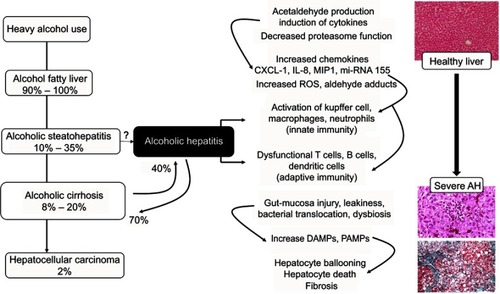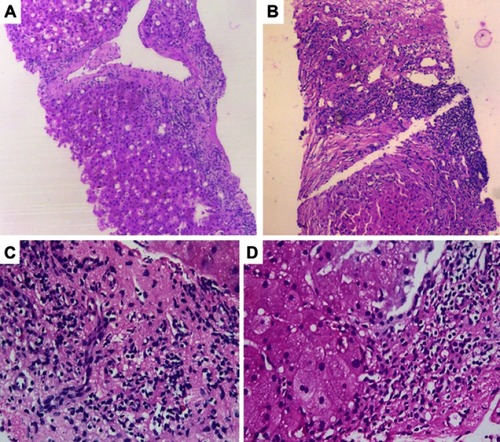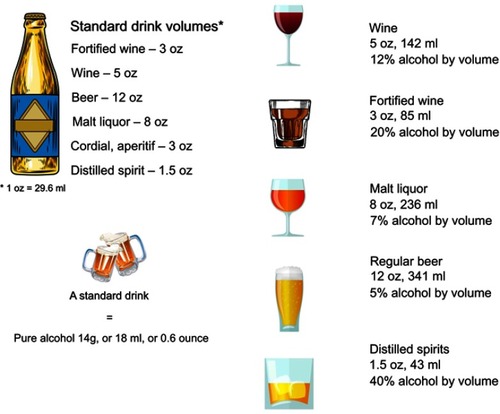Figures & data
Figure 2 Etiopathogenesis of alcoholic hepatitis.

Figure 3 Histopathology of alcoholic hepatitis with added insult(s). (A) Extensive zone 3 porto-central necrosis with mixed inflammation in a patient with severe alcoholic hepatitis as per clinical history and biochemical features, but with added ayurvedic herbal medicine related injury (haematoxylin and eosin stain, H&E, 20×). (B) Severe focal lymphocytic aggregates seen in a patient with severe alcoholic hepatitis with reactivation of hepatitis B virus infection (H&E, 20×). (C) Lymphocytic and eosinophilic inflammation in a patient with alcoholic hepatitis with super added polyherbal medicine related drug-induced liver injury (H&E, 40×). (D) Lymphoplasmacytic interface hepatitis due to hepatitis C virus infection in the background of balloon-degeneration of hepatocytes in a patient with severe alcoholic hepatitis (H&E, 40×).

Figure 4 Histopathology of alcoholic hepatitis. (A) Severe macrovesicular steatosis (haematoxylin and eosin stain, H&E, 40×). (B) Ballooning of hepatocytes (Masson-trichrome stain [MTS], 20×). (C) Foamy degeneration of alcoholic hepatitis (H&E, 40×). (D) Severe cholestasis of alcoholic hepatitis associated with foamy degeneration (H&E, 40×). (E) Mallory-Denk bodies seen in a patient with alcoholic hepatitis (H&E, 40×). (F) Chicken-wire or pericellular fibrosis of alcoholic hepatitis (MTS, 40×).
![Figure 4 Histopathology of alcoholic hepatitis. (A) Severe macrovesicular steatosis (haematoxylin and eosin stain, H&E, 40×). (B) Ballooning of hepatocytes (Masson-trichrome stain [MTS], 20×). (C) Foamy degeneration of alcoholic hepatitis (H&E, 40×). (D) Severe cholestasis of alcoholic hepatitis associated with foamy degeneration (H&E, 40×). (E) Mallory-Denk bodies seen in a patient with alcoholic hepatitis (H&E, 40×). (F) Chicken-wire or pericellular fibrosis of alcoholic hepatitis (MTS, 40×).](/cms/asset/0026ef6d-8613-4331-9f50-2a8706362d9f/dhme_a_197933_f0004_c.jpg)
Box 1 Summary of treatments for alcoholic hepatitis
Figure 5 Procedure for nasoduodenal fecal microbiota transplantation in alcoholic hepatitis. Before the procedure, a prokinetic is administered. (A) Blending of freshly collected (30 g) of stool sample with normal saline for 2 mins. (B) Filteration of the stool suspension to remove solid vegetable matter followed by (C) repeat filtration through sterile gauze to homogenize the suspension. (D): filtered stool suspension packed into sterile containers. (E) Infusion of stool suspension through a nasoduodenal tube in a patient with alcoholic hepatitis in grade 2 hepatic encephalopathy. (F) Post infusion, 50 mL normal saline flush is performed.


